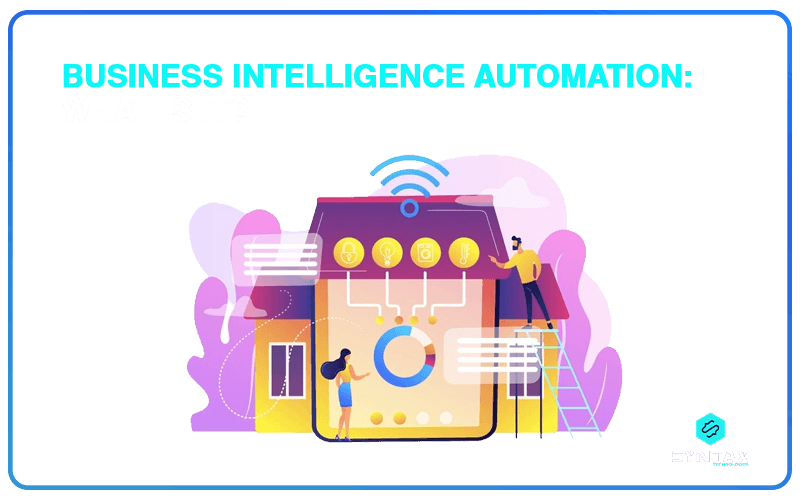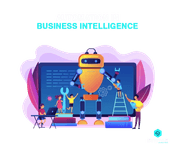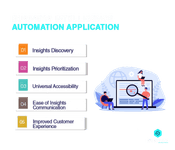A Business that Doesn’t Implement a Strategy of Automation in the Client Acquisition Process is Doomed to have Slow Growth, even Puts itself at Risk of Declining. – Bob Mangat (Author)
The technological revolution has been accompanied by an explosion of data. The amount of data available to a business enterprise at any given point of time, is unprecedented. The objective of Business Intelligence is all about exploiting and utilising this data in order to derive meaningful insights through data analysis, which could drive decision making.
However, the availability of data has not necessarily resulted in data driven decision making for all companies. This is because the availability of huge amounts of data has not simultaneously increased the capability to derive insights from the same.
Consequently, the potential of BI has not been completely realised. In order to address this shortcoming, firms have resorted to implementing Business Intelligence Automation.
For a more detailed understanding of the concept of Business Intelligence, refer to our blog on What is Business Intelligence?
Based on the idea of automating the process of Data Analytics, Automation in Business Intelligence helps in extracting valuable insights from data, cover unexpected changes in data and provide a detailed informative report on hidden problems and opportunities in your data. It is a scenario of Moving from Business Intelligence to Machine Learning with Automation.
In this blog, we will look at what is Business Intelligence Automation; consider the gradual evolution of Business Intelligence, Automation and Data Analytics; look at Business Automation and Intelligence Application in business scenarios and consequently evaluate the risks associated with Automation Business Intelligence.
What is Automation in Business Intelligence?
Business Intelligence Automation can be understood as a combination of technologies such as Artificial Intelligence (AI), Robotic Process Automation (RPA) and Business Process Management (BPM) along with automation strategies, in order to deliver, redesign and reconfigure IT processes for enhancing the outcomes of complex business processes.
Automation in Business Intelligence helps in deriving insights automatically which in turn reduces dependency on Data Analysts and Scientists.
Automation Business Intelligence encompasses certain specific technologies. These include:
- Machine Learning
- Cognitive Automation
- Natural Language Processing
- Intelligent Document Processing (IDP)
- Machine/Computer Vision
- Deep Learning
- Intelligent Business Process Management Applications
- Speech Recognition
Business Intelligence, Automation and Data Analytics: The Interconnected Evolution
The idea of Business Intelligence has been around for quite some time now. However, the hype surrounding the same, reached its peak around 2012.
Over the years, there has been a shift of Analytics Value Chain towards Business Intelligence Automation. In this section, we will look at the basic reason which accounted for this transition.
Data Visualization is an important component of Business Intelligence. Business Intelligence Reporting helps in the presentation of data in understandable forms which provides an idea of the current state of business. It helps in answering questions like, “What is the total sale of last month?”, “What has been the website traffic like for the preceding month?”.
However, the process is restricted to having a glimpse of data indicating the existing situation. The Business Intelligence tools are so designed that they aid in reporting on the metrics that they are specifically asked to report on.
Know everything about Business Intelligence Reporting; check out our blog on “Business Intelligence Reporting“
However, there is no scope for Data Analytics being performed outside the purview of what has been explicitly specified by the user. This means that under a normal situation, Business Intelligence software does not provide you with insights other than those which you were explicitly looking for.
This implies that Business Intelligence does not guarantee more Data Analytics on its own. The consolidation of huge volumes of data is not enough to facilitate human analysis which can take months or even years.
There is a missing link in the equation and this is where Business Intelligence Automation steps in. The complete equation is that of Business Intelligence, Automation and Data Analytics. This Automation in Business Intelligence has helped in discovering hidden trends and insights in data automatically, in response to even a slightest change in stored data.
Thus, Business Intelligence Automation saves the precious time which Data Analysts would have otherwise spent on exploring and combining data. On the contrary, the business executives can instead focus on developing appropriate strategies for their business on the basis of insights gained through Automation Business Intelligence.
Business Automation and Intelligence Application
In this section we will look at some of the crucial business processes which can be subjected to Business Intelligence Automation.
Automating the Process of Discovering Insights
The objective of Automation in Business Intelligence is to simplify the process of deriving valuable insights from data by way of lessening human involvement and effort. This is sought to be achieved through the power of Artificial Intelligence which helps in automating the reasoning and logic of discovery.
By way of Business Automation and Intelligence Application, it is important to ensure to go beyond the usual queries posed by the users. This helps in increasing the chances of identifying the occurrence of changes outside the expected.
Automating the Process of Ranking Insights
Business Intelligence Automation results in discovery of far more insights than would otherwise be possible without automation. However, Automation Business Intelligence goes beyond that. It also helps in prioritising and ranking insights, by way of focusing upon the most significant insights which could help in decision making. Additionally, AI has also helped to bridge connections between different insights and thereby help in deriving simultaneous conclusions.
Ensuring Easy Accessibility
Automation in Business Intelligence ensures that the process of deriving insights do not remain solely restricted to Data Scientists and Analysts alone. The objective is to guarantee valuable insights at the click of a button. This helps in improving the prospects of improved decision making without the necessary dependence on technical personnel.
Facilitating the Communication of Insights
BI Tools for Reporting have definitely evolved as impressive mediums for producing attractive Data Visualizations. However, even when this data is presented in appealing and understandable forms; the task of deriving insights from it ultimately rests in the hands of business executives.
This process to analyze data subjectively can result in misinterpretation and contradiction. Techniques of Business Intelligence Automation such as AI help in automatic and machine based communication of insights.
Improving Customer Experience
Automation in Business Intelligence does not only ensure availability of precise client information for the Companies, but it also helps in enhancing overall customer experience through facilitating deeper customer interaction.
Automation Business Intelligence can help in setting up client satisfaction surveys, can automate help desk queries and solutions, can enhance touch base with consumers as well as acquire patterns on customer behavior.
Risks Associated with Business Intelligence Automation
Researchers have pointed out that one of the crucial shortcomings of Automation in Business Intelligence is that there is a lack of sufficient history and time in terms of providing deep learning experiences.
Theoretically speaking, automating the process of Business Intelligence through AI wherein the software is well suited to ask the right questions, provide us with immediate answers and discover valuable insights by analyzing data; is more of an ideal situation. It is impossible to ensure a complete understanding of the human brain.
Consequently, it is difficult to provide for complete replication of decision making and logic. In this section, we will try to look at some of the drawbacks of Business Intelligence Automation, beyond its theoretical advantages.
Failure of Business Process
As you happen to be moving from Business Intelligence to Machine Learning with Automation, one of your main goals would be to increase efficiency and productivity. However, such an outcome is not necessarily assured.
The inclusion of multiple and sophisticated technologies might result in significant challenges in information governance and change management. If these issues are not timely addressed, it can result in utter business process failure.
Loss of Data
Business Automation and Intelligence Application has definitely propelled the pace at which and the volume of data being collected. However, these processes are still machine based and in remote situations might even fall prey to certain unforeseen problems like a password reset which might halt the process of data collection. This does not only interrupt the process of acquiring data, but an unexpected pause might result in loss of valuable data which might never be able to be restored.
Data Leakage
The structure of Business Intelligence Automation is based on providing for a combination of intelligent technologies. However, these new technologies are in the form of software applications and an increase in the number of these applications only results in increasing the possibility of exploitation of its vulnerabilities by cyber criminals.
These software applications are often repositories of not just sensitive information, but also network login credentials. Failure to incorporate Information Security in the planning process might result in data breach which in turn can spell disaster for the firm concerned.
Conclusion
It is quite evident that efforts aimed at improving the process of businesses are bound to take the BI route. Moreover, the explosion of data and rapid digital transformation is likely to make Business Intelligence Automation inevitable.
It is not the question of Automation vs. Business Intelligence, but in fact, the two is made to go hand in hand. The trio of Business Intelligence, Automation and Data Analytics help in efficient data collection, automation of repetitive tasks, appealing data visualization as well as meaningful extraction of insights.
Additionally, the pandemic has only increased the push towards automation in order to lessen dependence on human efforts.
Business Intelligence is one of the most lucrative career opportunities in existing times. You will only be wise to develop capabilities in relation to the demands of this domain.
We, at Syntax Technologies, offer you the opportunity to evolve as a BI expert. You can read more about our Data Analytics and Business Intelligence course here:

